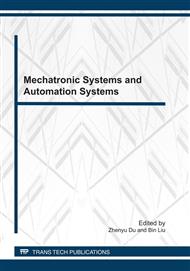p.148
p.152
p.156
p.160
p.165
p.169
p.173
p.177
p.182
Simulations of the Anti-Torpedo Tactic of the Conventional Submarine Using Decoys and Jammers
Abstract:
The conventional submarine has the disadvantages of not-so-fast evasive speed, and the limited capability of torpedo countermeasure systems. There are two types of countermeasures: decoys and jammers.A successful anti-torpedo tactic should consist of the deployment of mixed decoys and jammers and the coordination with the submarine’s maneuver. This paper would like to discuss the anti-torpedo tactics from the classical viewpoint A simulation scenario is implemented in order to study the interaction among the submarine, torpedo,decoy and jammers.After applying the evolutionary algorithm, it is interesting to discover some points about anti-torpedo tactics using a mix of decoys and jammers that would make a significant contribution to the survivability of submarine in the torpedoes engagement scenario.
Info:
Periodical:
Pages:
165-168
Citation:
Online since:
June 2011
Keywords:
Price:
Сopyright:
© 2011 Trans Tech Publications Ltd. All Rights Reserved
Share:
Citation:


